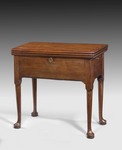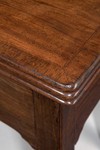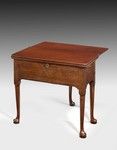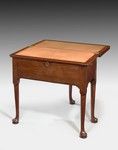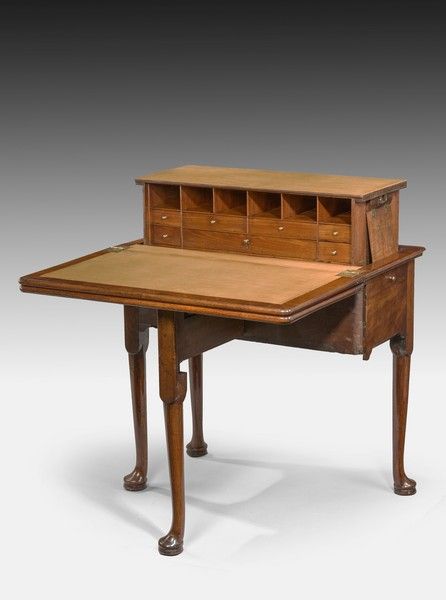
|
 Enquire About This Item Enquire About This Item
|
A fine and rare George II period mahogany harlequin table. (c. 1730 English)
This very ingenious pier/tea/games bureau-table reflects the George II French style and fascination for metamorphic furniture as favoured in the 1730s for fashionable London parlours and reception rooms. The crossbanded and featherbanded top conceals a plain mahogany double top and is supported on a hinged back leg when opened. Another leaf conceals a leather-lined games/writing-table, whose rising 'harlequin' pop-up 'cartonnier' cabinet contains drawers and paper 'pigeon holes'. The turned and tapered legs terminate in high pad feet, retaining the original concealed castors.
|
|
| Dimensions |
31.50inch wide
29.50inch high
16.00inch deep
(80.01 cm wide 74.93 cm high 40.64 cm deep) |
| Medium | Mahogany. |
| Condition | In super condition and in full extraordinary working order! Great colour an patina. The brassware and castors are all original. The fine leather top has been refitted. |
| Literature |
Attributed to Thos. Potter, High Holborn, London.
A related pier-table, concealing a 'harlequin' tea-tray, is also featured in a Potter pattern (C. Gilbert, Furniture at Temple Newsam House and Lotherton Hall, Leeds, vol. III, 1998, No.828). Amongst other very closely related tables is one illustrated P. Thornton and D. Fitz-Gerald, 'Abraham Roentgen 'Englische Kabinettmacher' and some further reflections on the work of John Channon', Victoria & Albert Museum Bulletin, October 1966, pp. 137-147 and fig. 8. Abraham Roentgen from Neuweid formed part of the immigrant Moravian community, working in London in the early 1730s; and, like Channon, appear to have specialised in the manufacture of such ingenious furniture. Another related table may have been amongst the furniture introduced around 1740 to Keir House, Dunblane by John Keir (d. 1757) and sold by the late Archibald Stirling, Keir House, Dunblane; Christie's house sale, 22-23 May 1995 lot 99. Another harlequin games-table was offered anonymously, Phillips London, 4 October 1994, lot 70, and one attributed to Thomas Potter, sold by Archibald Stirling of Keir, Keir Mains, Dunblane, Perthshire, Christie's house sale, 22 May 1995, lot 99 (C. Gilbert and T. Murdoch, John Channon and brass-inlaid furniture 1730-1760, New Haven and London, 1993, figs. 11 and 113, pls. VIII and IX). |
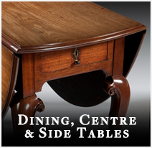
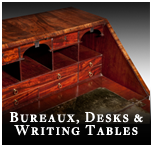
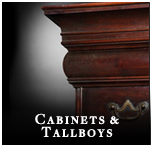
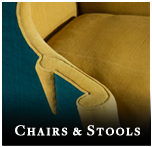
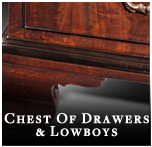
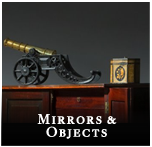
 Back To Gallery
Back To Gallery